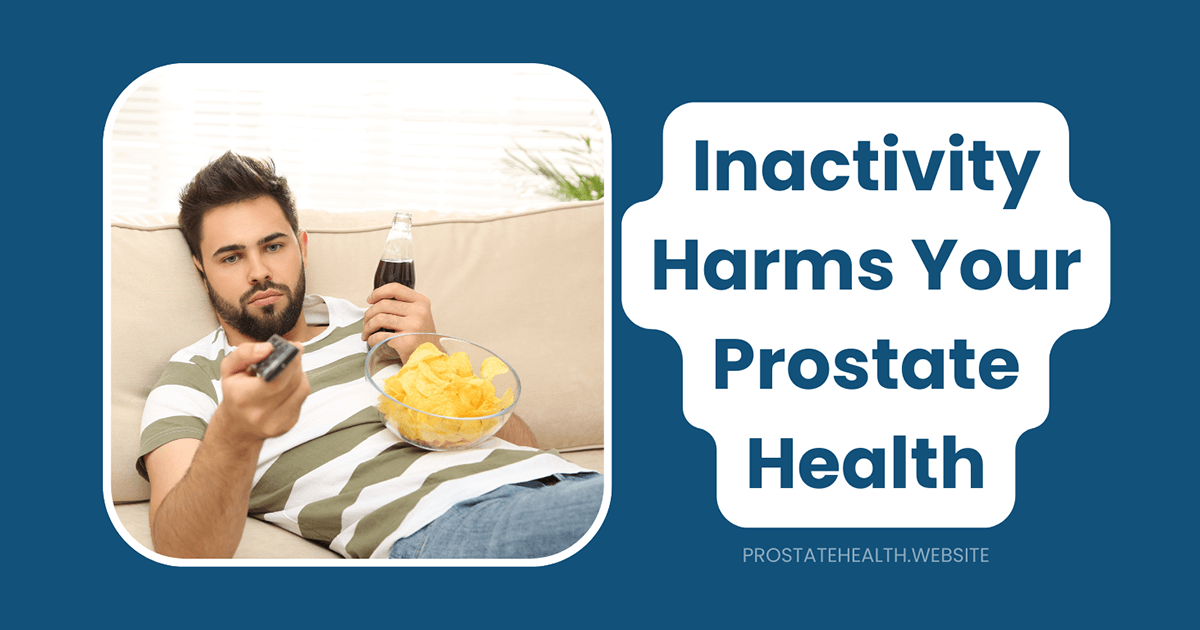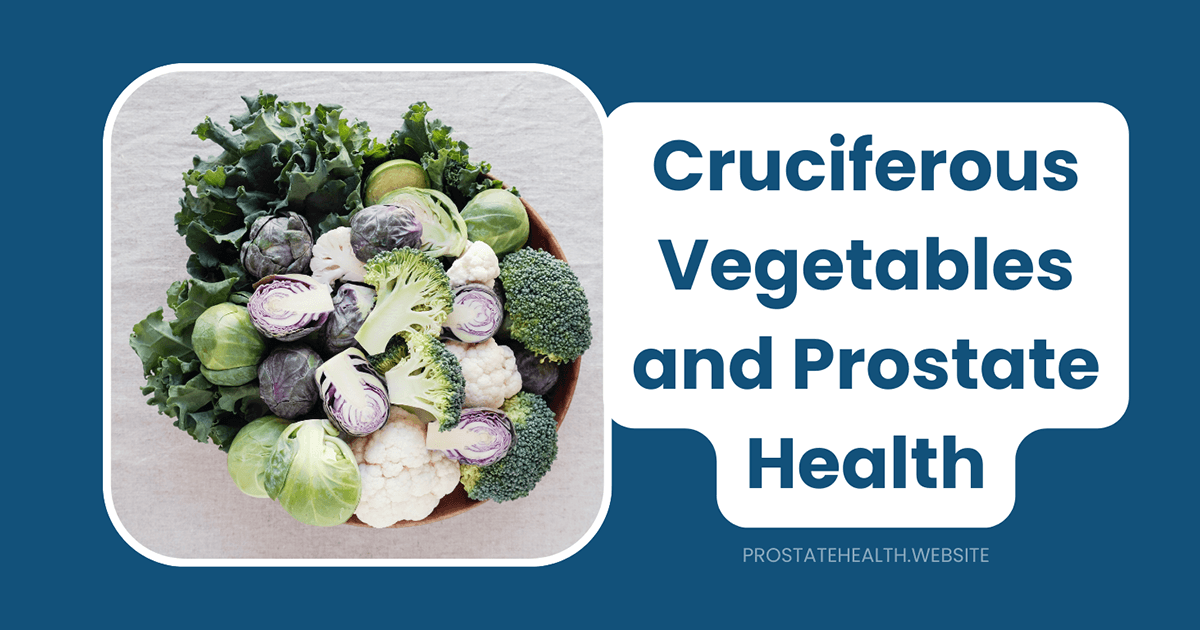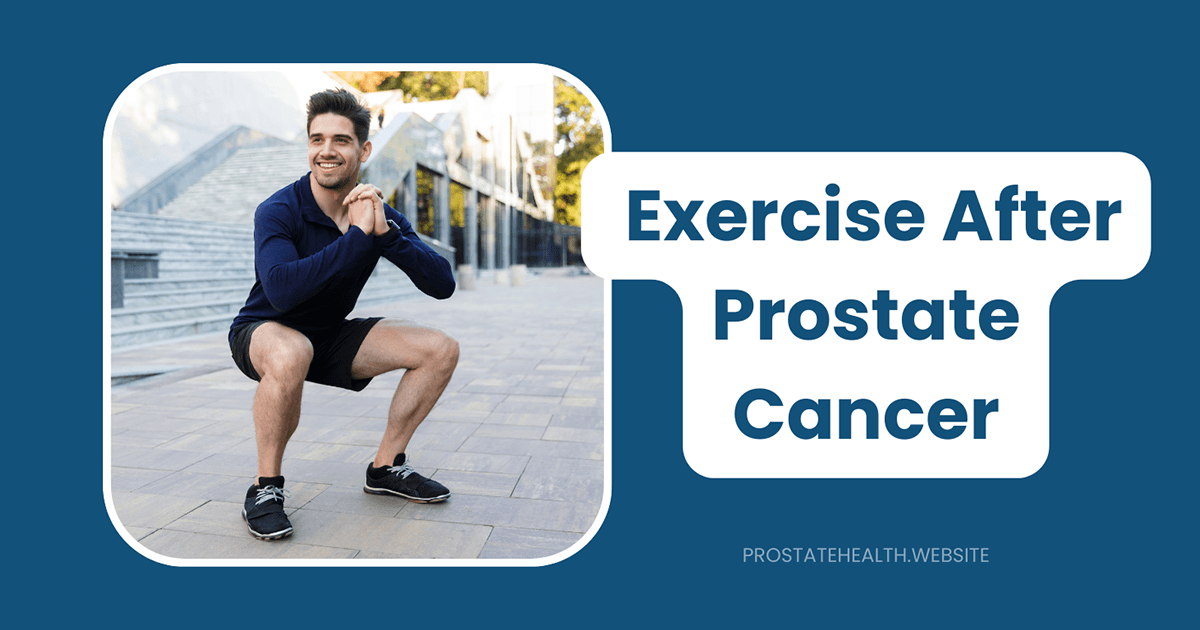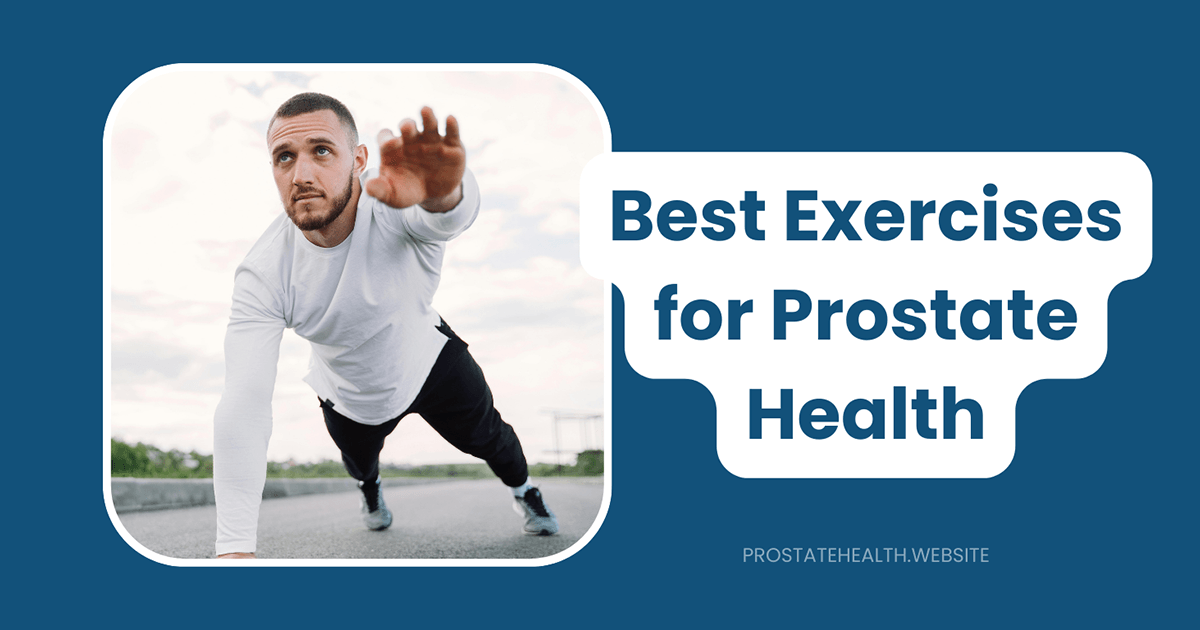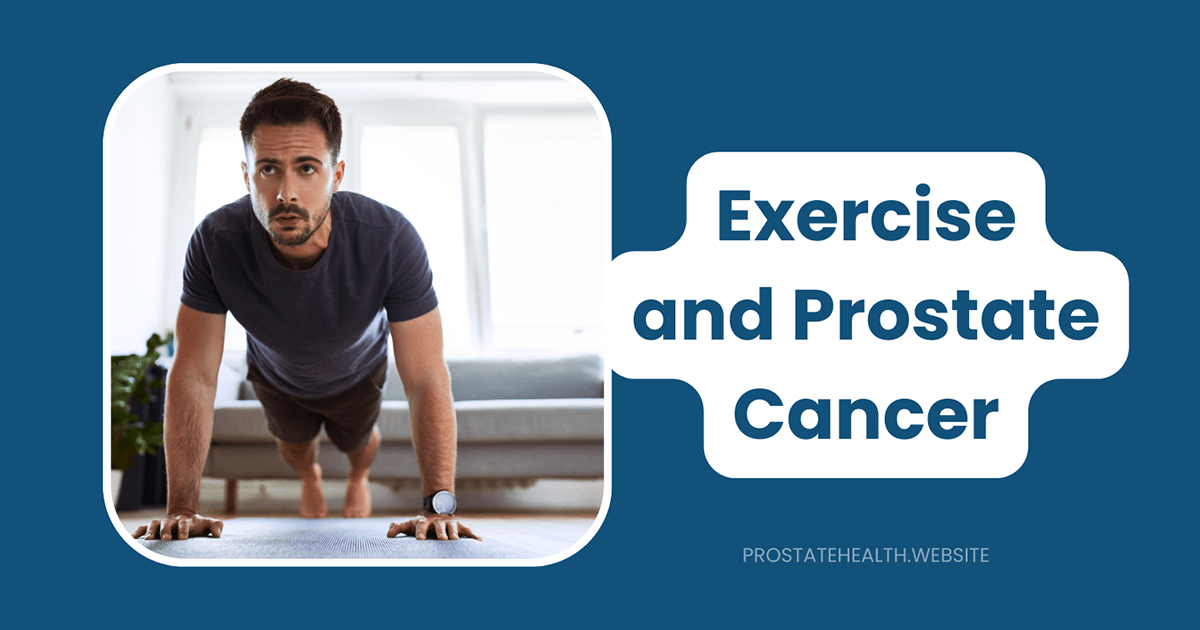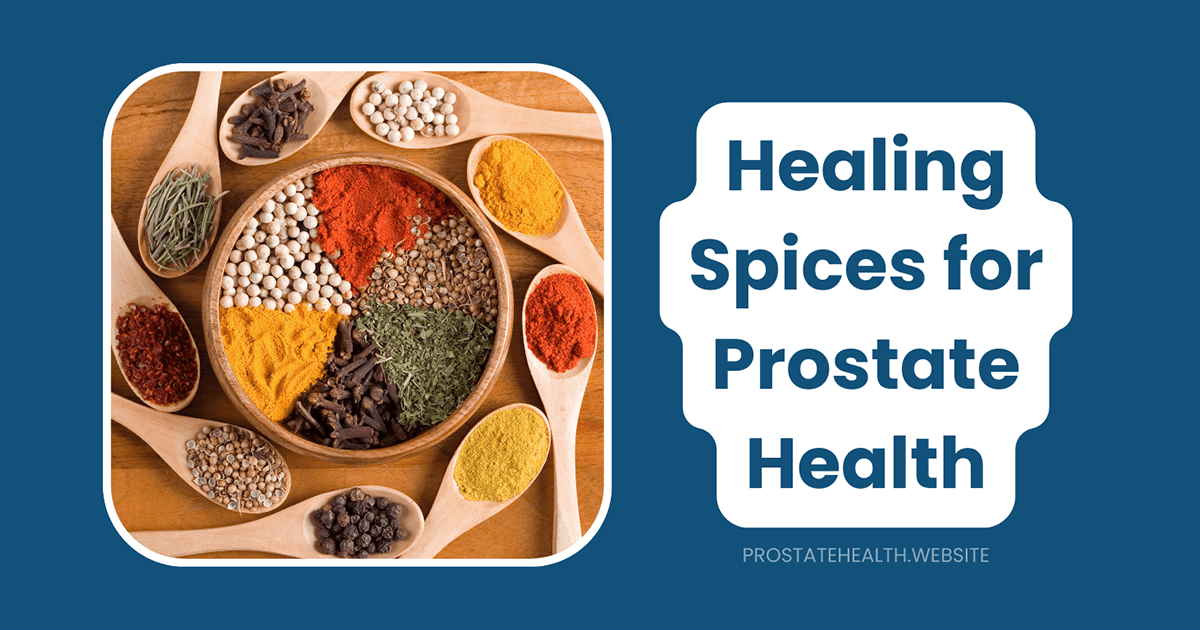High-Intensity vs. Low-Impact Exercise: What’s Best for Prostate Health?
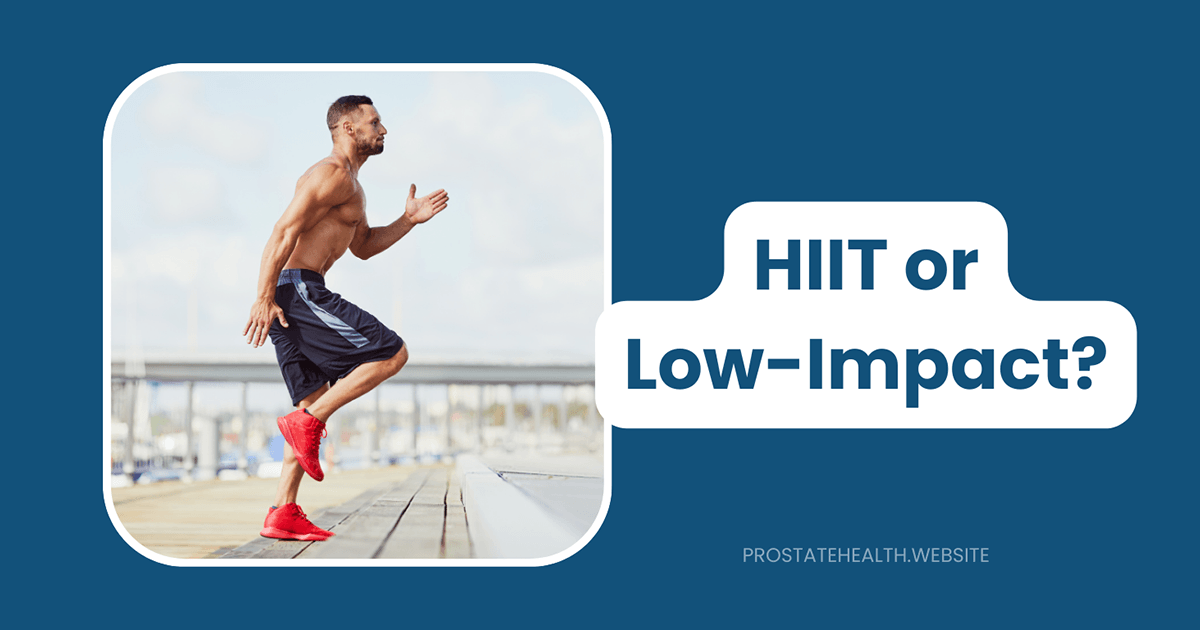
When Robert, a 62-year-old with early-stage prostate cancer, asked his urologist about exercise, he received an unexpected response: “It depends.”
“I thought exercise was just exercise,” Robert told me. “I didn’t realize there were different approaches that might affect my prostate differently. My doctor mentioned both high-intensity and low-impact options, but I left feeling confused about which would be best for my situation.”
Robert’s experience highlights a common question among men concerned about prostate health: Is it better to push your limits with high-intensity workouts or stick to gentler, low-impact activities?
The answer isn’t one-size-fits-all. Recent research reveals that both high-intensity (HIIT) and low-impact exercise offer distinct benefits for prostate health—but their appropriateness depends on your specific prostate condition, overall fitness level, and personal health circumstances.
This comprehensive guide examines the science behind both exercise approaches, helping you understand which might be most beneficial for your prostate health needs.
Understanding Exercise Intensity and Impact
Before diving into prostate-specific benefits, let’s clarify what we mean by high-intensity and low-impact exercise:
High-Intensity Exercise
High-intensity exercise involves:
- Working at 70-90% of your maximum heart rate
- Significant cardiovascular challenge
- Often performed in intervals (high-intensity interval training or HIIT)
- Examples: Sprint intervals, vigorous cycling, intense circuit training
High-intensity interval training (HIIT) typically involves short bursts of intense activity (30 seconds to 4 minutes) alternated with recovery periods of similar or longer duration.
Low-Impact Exercise
Low-impact exercise involves:
- Activities that put minimal stress on joints
- Often steady-state (continuous) activity
- Usually performed at moderate intensity
- Examples: Walking, swimming, cycling, elliptical training, yoga
Low-impact doesn’t necessarily mean low-intensity—you can perform low-impact exercises vigorously (like swimming laps at a fast pace), but they generally cause less mechanical stress on the body.
The Science: Exercise and Prostate Health
Research consistently shows that regular physical activity benefits prostate health, but the specific effects vary by exercise type and prostate condition.
Exercise Benefits for Overall Prostate Health
Regardless of intensity or impact, regular exercise offers several benefits for prostate health:
- Reduced inflammation: Chronic inflammation contributes to prostate conditions, and regular exercise has anti-inflammatory effects
- Improved circulation: Better blood flow to the pelvic region can enhance prostate health
- Hormone regulation: Exercise helps maintain healthier testosterone and insulin levels, which influence prostate health
- Weight management: Maintaining a healthy weight reduces risk factors for prostate conditions
- Stress reduction: Lower stress levels can benefit prostate health through reduced sympathetic nervous system activity
Dr. Sarah Johnson, urologist at Memorial Urology Center, explains: “The prostate responds positively to regular physical activity through multiple pathways. Exercise creates a more favorable hormonal environment, reduces inflammation, and improves blood flow to the pelvic region—all of which support prostate health.”
High-Intensity Exercise and Prostate Health
Recent research has generated excitement about high-intensity exercise, particularly for men with prostate cancer.
Research Highlights
The ERASE trial (Exercise During Active Surveillance for Prostate Cancer), published in 2025, provided compelling evidence for high-intensity interval training (HIIT):
- 52 men with localized prostate cancer on active surveillance were randomized to either HIIT or usual care
- The HIIT group performed supervised treadmill exercise at 85-95% of peak oxygen consumption three times weekly for 12 weeks
- Results showed:
- Decreased PSA levels in the HIIT group
- Reduced PSA velocity (rate of PSA increase)
- Improved cardiorespiratory fitness
- Inhibited growth of prostate cancer cells in laboratory tests
Another 2025 study presented at the European Association of Urology conference found that HIIT improved quality of life and physical function in men with prostate cancer.
Potential Mechanisms
How might high-intensity exercise specifically benefit the prostate? Several mechanisms have been proposed:
- Myokine production: High-intensity exercise triggers muscle cells to release myokines—proteins that may have anti-cancer properties
- Metabolic improvements: HIIT effectively improves insulin sensitivity, potentially reducing a growth factor for prostate cancer
- Immune function: Vigorous exercise enhances immune surveillance, which may help control cancer cells
- Oxidative stress adaptation: While intense exercise temporarily increases oxidative stress, regular training improves the body’s antioxidant defenses
Dr. Michael Chen, exercise physiologist specializing in cancer rehabilitation, notes: “The intensity seems to matter. High-intensity exercise creates a more potent acute stress response that, when repeated regularly, appears to trigger adaptations particularly beneficial for men with prostate cancer.”
Potential Benefits of High-Intensity Exercise
Based on current research, high-intensity exercise may offer these prostate-specific benefits:
- For prostate cancer: Potential to slow disease progression, particularly in early-stage cases
- For overall prostate health: Improved hormonal profile and metabolic health
- For general health: Enhanced cardiovascular fitness, improved body composition, and potentially longer lifespan
Low-Impact Exercise and Prostate Health
While high-intensity exercise has garnered attention, low-impact activities have a longer research history supporting prostate health benefits.
Research Highlights:
A large-scale study published in the Journal of Urology followed over 28,000 men for nearly 8 years and found:
- Men who engaged in regular low-impact exercise (particularly walking) had a significantly lower risk of developing BPH
- Those who walked or ran longer distances weekly showed greater protection against BPH
- The relationship between exercise and reduced BPH risk was independent of age, BMI, and dietary factors
Another study in the Archives of Internal Medicine found that men who walked regularly (at least 3 hours per week at a brisk pace) had a 57% lower rate of prostate cancer progression compared to men who walked less.
Potential Mechanisms
Low-impact exercise may benefit prostate health through:
- Reduced sympathetic nervous system activity: Lower-intensity exercise can decrease sympathetic tone, which may reduce prostate and urinary symptoms
- Pelvic blood flow: Steady-state exercise improves circulation to the pelvic region without the extreme demands of high-intensity work
- Stress reduction: Moderate exercise effectively reduces stress hormones that can exacerbate prostate conditions
- Sustainable frequency: The gentler nature of low-impact exercise allows for more frequent participation, potentially providing more consistent benefits
Potential Benefits of Low-Impact Exercise
Low-impact exercise offers several prostate-specific advantages:
- For BPH and urinary symptoms: Reduced urinary frequency, improved flow, and decreased nocturia
- For prostatitis: Potential reduction in pelvic pain and discomfort
- For overall prostate health: Improved circulation and reduced inflammation
- For general health: Joint-friendly activity that can be maintained throughout life
Comparing Approaches: Which Is Right for You?
The “best” exercise approach depends on your specific situation. Here’s a comparison to help guide your decision:
High-Intensity Exercise May Be Better If:
- You have early-stage prostate cancer and are physically capable of vigorous exercise
- You’re already reasonably fit and have no joint problems or cardiovascular concerns
- You prefer shorter workouts (HIIT sessions can be effective in 20-30 minutes)
- You enjoy pushing yourself physically
- You have no contraindications to vigorous exercise
Low-Impact Exercise May Be Better If:
- You have BPH with urinary symptoms
- You’re new to exercise or returning after a long break
- You have joint problems, osteoporosis, or other conditions that make high-impact exercise challenging
- You prefer longer, steady-state activities
- You’re recovering from prostate surgery or radiation
Considerations for Specific Prostate Conditions
For Prostate Cancer
- Early-stage/Active Surveillance: Both approaches show benefits, with some evidence favoring high-intensity if physically capable
- During Treatment: Low-impact is generally safer during radiation or recovery from surgery
- Advanced Stage: Low-impact with gradual progression, under medical supervision
For BPH
- Mild to Moderate Symptoms: Both approaches may help, with some evidence favoring regular low-impact activity
- Severe Symptoms: Start with low-impact and gradually increase intensity as tolerated
- After BPH Procedures: Begin with low-impact and progress gradually
For Prostatitis
- Acute Prostatitis: Rest during acute phase, then gentle low-impact when symptoms improve
- Chronic Prostatitis/CPPS: Low-impact exercise often helps reduce symptoms; high-intensity may exacerbate symptoms in some men
Dr. Robert Thompson, urologic oncologist, advises: “For most prostate conditions, starting with low-impact exercise and gradually increasing intensity as tolerated is the safest approach. Men who are already fit and have early-stage prostate cancer might consider incorporating some high-intensity intervals, but always with proper medical clearance.”
Creating Your Prostate-Healthy Exercise Plan
The good news? You don’t have to choose exclusively between high-intensity and low-impact approaches. Many men benefit from a combined approach.
Sample Combined Approach
Here’s a balanced weekly plan that incorporates both types of exercise:
Monday: Low-impact steady-state (30-minute brisk walk or swim)
Tuesday: High-intensity intervals (if appropriate for your condition)
- 5-minute warm-up
- 10 rounds of 30 seconds intense effort/90 seconds recovery
- 5-minute cool-down
Wednesday: Active recovery (gentle yoga or light walking)
Thursday: Low-impact steady-state (30-45 minutes cycling or elliptical)
Friday: High-intensity intervals (if appropriate) or another low-impact session
Saturday: Longer low-impact activity (45-60 minute hike, bike ride, or swim)
Sunday: Rest or gentle movement (easy walking or stretching)
Starting Points for Different Fitness Levels
If You’re New to Exercise:
- Begin with low-impact activities 2-3 days per week
- Start with 10-15 minutes and gradually increase duration
- Focus on consistency rather than intensity
- Add gentle strength training after establishing a cardio routine
- Consider working with a fitness professional familiar with prostate conditions
If You’re Already Active:
- Maintain your current activity if it’s well-tolerated
- Consider adding 1-2 HIIT sessions weekly if appropriate for your condition
- Ensure adequate recovery between high-intensity sessions
- Monitor how your prostate symptoms respond to different exercise types
- Adjust based on your body’s feedback
Precautions and Safety Considerations
Regardless of which approach you choose:
- Get medical clearance before starting a new exercise program, especially if you have existing prostate conditions
- Start gradually and progress slowly
- Stay hydrated, but consider timing fluid intake if you have urinary frequency
- Listen to your body and modify as needed
- Consider working with a physical therapist or certified cancer exercise specialist
- Stop exercising and consult your healthcare provider if you experience pain, dizziness, or unusual symptoms
Real-World Success: Finding What Works
Different approaches work for different men, as these real-world examples illustrate:
James, 58, early-stage prostate cancer on active surveillance: “After my diagnosis, I started a HIIT program three times weekly under my doctor’s supervision. My PSA has remained stable for two years, and I feel stronger than I have in decades. The short, intense workouts fit perfectly into my busy schedule.”
Michael, 65, moderate BPH: “High-intensity exercise actually seemed to worsen my urinary symptoms. When I switched to daily 30-minute walks and swimming twice weekly, my nocturia improved dramatically. I now only get up once at night instead of three or four times.”
David, 72, post-prostatectomy: “I started with short walks after surgery, then gradually added recumbent biking. Six months post-surgery, I introduced some gentle intervals—30 seconds of increased effort followed by 2-3 minutes of recovery. This combined approach helped me regain fitness while managing my continence issues.”
The Expert Consensus: Individualization Is Key
The current scientific consensus suggests that:
- Both exercise types offer benefits for prostate health
- Individual factors (current fitness, specific prostate condition, preferences) should guide your approach
- Starting with low-impact and gradually increasing intensity is safest for most men
- Consistency matters more than the specific type of exercise
- Monitoring your response and adjusting accordingly is essential
Dr. Jennifer Williams, integrative medicine specialist focusing on men’s health, summarizes: “The debate isn’t really about which type of exercise is universally ‘better’ for prostate health—it’s about finding the right approach for each individual man. Some will thrive with high-intensity training, while others will benefit more from gentler, low-impact activities. The worst exercise is the one you don’t do because it doesn’t suit your body or lifestyle.”
Practical Implementation Tips
To successfully incorporate exercise for prostate health:
Track Your Symptoms and Exercise
Keep a simple log noting:
- Type, duration, and intensity of exercise
- Urinary symptoms (frequency, urgency, flow)
- Energy levels and general well-being
- Any pain or discomfort
This information can help you identify which approaches work best for your body.
Make It Sustainable
- Choose activities you enjoy
- Find an exercise buddy for accountability
- Set realistic goals based on your current fitness level
- Celebrate small improvements
- Be flexible and adjust as needed
Complement Exercise with Other Prostate-Healthy Habits
- Follow a Mediterranean-style diet
- Stay properly hydrated
- Manage stress through mindfulness or relaxation techniques
- Get adequate sleep
- Maintain regular medical check-ups
Conclusion: Finding Your Personal Balance
As we’ve seen, both high-intensity and low-impact exercise offer valuable benefits for prostate health. The “best” approach isn’t universal—it’s the one that works for your unique situation and that you’ll maintain consistently.
Remember Robert from the beginning of our article? After discussing options with his healthcare team, he decided to start with daily 30-minute walks and twice-weekly swimming sessions. After three months, feeling stronger and noting stable PSA levels, he gradually introduced one weekly session of modified high-intensity intervals on a stationary bike.
“Finding the right balance of high-intensity and low-impact exercise has been key,” Robert reflects. “I get the cardiovascular benefits and potential cancer-fighting effects of the intense sessions, but the gentler activities keep me moving consistently without strain. My prostate health has improved, but so has my overall quality of life.”
Whether you choose high-intensity exercise, low-impact activities, or a combination approach, the most important factor is regular, consistent physical activity tailored to your body’s needs and capabilities. Work with your healthcare providers to develop an exercise plan that supports your prostate health while enhancing your overall wellbeing.
Have you found certain types of exercise particularly beneficial for your prostate health? Share your experiences in the comments below.

